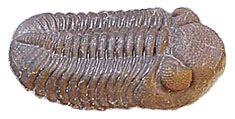Adventures on Earth column for the Dec. 29 edition of The Review
By George E. Beetham Jr.
Two hundred-fifty million years ago, all of the Earth’s continents had come together in the supercontinent that geologists call Pangea.
The dynamics of plate tectonics are such that supercontinents do not last very long in geologic time. For one thing, the weight of so much continental rock pushes down on the mantle below, altering the convection currents in the viscous mantle.
Hot spots form under the supercontinent, getting larger and hotter until the magma pushes up to the surface. This begins the rifting process that splits supercontinents apart.
Pangea 250 million years ago was a continuous landmass stretching nearly from pole to pole. A shallow, continental sea had formed on the western side of the northern part of Pangea.
Over time this shallow sea formed bogs. Peat and vegetation built up and were buried, forming a vast coalfield. Although this area was a sea, it was over a continental shelf and thus part of the supercontinent.
A plume of hot mantle formed under that shallow sea, sending hot magma toward the surface. When it broke through, massive amounts of magma welled up and out over the surface.
The eruption triggered a chain of events that was to have a profound impact for life that existed at that time.
The eruptions continued for a million years, the lava spreading across an area estimated at seven million square kilometers.
In addition to lava, the volcanic vents spewed out gases – carbon dioxide, methane, sulfur aerosols, and water vapor. Ash was also expelled.
The particulates and gases spread into the atmosphere, circling the globe. The gases are prime greenhouse gases trapping heat below and the particulates blocked sunlight from above.
The magma rose through the coal beds, igniting the coal and adding to the environmental disaster that was playing out.
All of this, again, played out for a million years, altering weather as well as the atmosphere.
It was at that very time, 250 million years ago, that the largest mass extinction in the history of Earth took place. An estimated 90 percent of species that existed prior to the eruptions went extinct.
It marked the end of the trilobites, crustaceans that plied the sea floors. Trilobites had existed since the Cambrian and were once plentiful in the seas of the planet. They survived mass extinctions time and time again. Although some members of the clan did go extinct in these earlier events, trilobites as a whole continued on, adapting to changing conditions.
By the Permian, only one species of trilobites was left, but that expired when the Siberian traps erupted.
Included in the extinction were marine creatures and land dwellers. No part of the biosphere was spared.
Yet some creatures did survive into the Triassic Period that followed the Permian.
These survivors adapted to the conditions that prevailed, branching out to form new species.
It took an estimated 30 million years for the planet to totally recover from this catastrophe, but the Permian mass extinction did accomplish one significant thing.
The turnover in fauna greased the skids for the rise of dinosaurs and other species that sprang from the survivors.
As dire as the disaster was, it brought the world closer to being inhabited by humans. Another disaster 65 million years ago brought it further along.
Every great dying in Earth’s history has been followed by a period of recovery, and then species radiate out to fill ecological niches once occupied by the now deceased creatures.

No comments:
Post a Comment